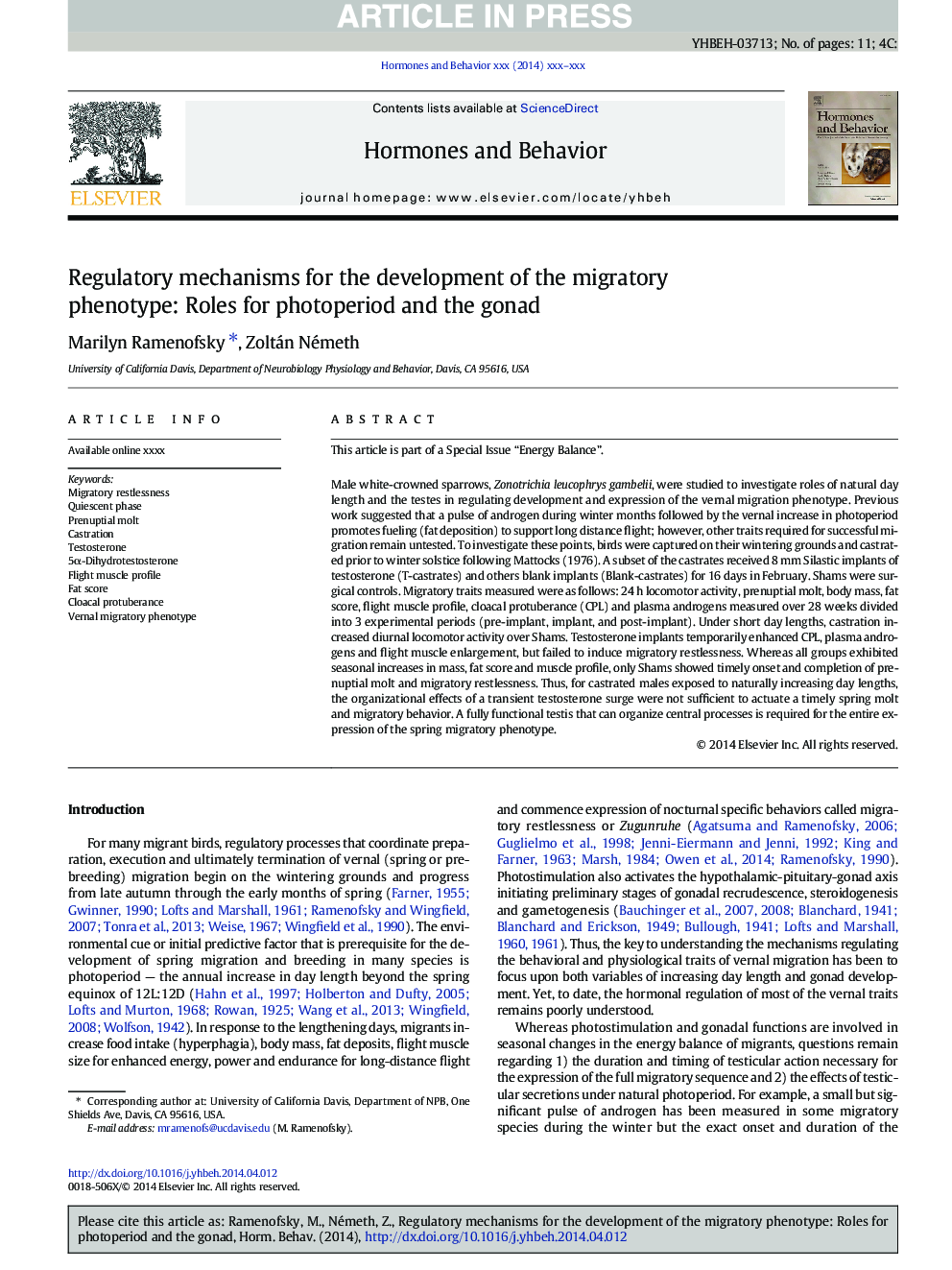| Article ID | Journal | Published Year | Pages | File Type |
|---|---|---|---|---|
| 10301475 | Hormones and Behavior | 2014 | 11 Pages |
Abstract
Male white-crowned sparrows, Zonotrichia leucophrys gambelii, were studied to investigate roles of natural day length and the testes in regulating development and expression of the vernal migration phenotype. Previous work suggested that a pulse of androgen during winter months followed by the vernal increase in photoperiod promotes fueling (fat deposition) to support long distance flight; however, other traits required for successful migration remain untested. To investigate these points, birds were captured on their wintering grounds and castrated prior to winter solstice following Mattocks (1976). A subset of the castrates received 8Â mm Silastic implants of testosterone (T-castrates) and others blank implants (Blank-castrates) for 16Â days in February. Shams were surgical controls. Migratory traits measured were as follows: 24Â h locomotor activity, prenuptial molt, body mass, fat score, flight muscle profile, cloacal protuberance (CPL) and plasma androgens measured over 28Â weeks divided into 3 experimental periods (pre-implant, implant, and post-implant). Under short day lengths, castration increased diurnal locomotor activity over Shams. Testosterone implants temporarily enhanced CPL, plasma androgens and flight muscle enlargement, but failed to induce migratory restlessness. Whereas all groups exhibited seasonal increases in mass, fat score and muscle profile, only Shams showed timely onset and completion of prenuptial molt and migratory restlessness. Thus, for castrated males exposed to naturally increasing day lengths, the organizational effects of a transient testosterone surge were not sufficient to actuate a timely spring molt and migratory behavior. A fully functional testis that can organize central processes is required for the entire expression of the spring migratory phenotype.
Related Topics
Life Sciences
Biochemistry, Genetics and Molecular Biology
Endocrinology
Authors
Marilyn Ramenofsky, Zoltán Németh,
